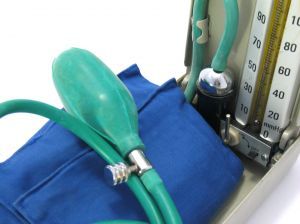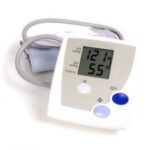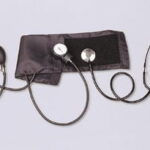It started happening to me when I was a teenager. I would stand up and find myself needing to immediately sit back down. I experienced severe lightheadedness and dizziness, along with a temporary blacking of my vision. After a few moments, the symptoms would clear and I could stand up again and continue with whatever I had needed to do. After a few years, I even learned how to compensate for the inevitable dizziness by grabbing onto a chair or wall to wait it out instead of sitting back down.
After working in the medical field for many years now, I can give a name to what was happening to me. I had symptoms of low blood pressure, or hypotension. The precise name for my variety of low blood pressure is actually orthostatic hypotension, because it occurs upon changing position.
With all the bad press given to high blood pressure (defined as higher than 130/80 as confirmed by medicinenet.com), you might think that having low blood pressure is desirable. However, if your blood pressure is so low that it is causing symptoms, it can put you at risk of problems you don’t really want to have.
For instance, there’s really not much good reason to deprive your brain of the oxygen it needs to run at peak performance, but that is exactly what happens when a person experiences those symptoms of low blood pressure such as dizziness and lightheadedness. In severe cases, the lack of blood to the brain can cause temporary fainting, or passing out. In the most severe cases a lack of blood pressure can lead to life-threatening shock.
Other symptoms of dangerously low blood pressure include weakness and fatigue. Both medicine.net and mayoclinic.com recommend that you seek medical help if your low blood pressure is causing any symptoms, because of the potential for a serious underlying medical condition. Potential causes include heart problems, adrenal failure, internal bleeding and complications of diabetes.
However, not all causes of the symptoms of low blood pressure are quite so serious. No one ever really found out why I was experiencing it so strongly. A few things that you can do at home include increasing your fluid intake–especially of water and low-sugar electrolyte drinks–and learning how to do isometric exercises if you are experiencing orthostatic hypotension like I did.
The isometric exercises involve an effort to force an increase in your blood pressure just before or during the change in posture that can bring on the symptoms of low blood pressure. Keeping a stress ball in your handbag or coat pocket so you can give it a good hard squeeze is one way to drive up the blood pressure. Another method is to raise your hands in front of you and grasp them together, pushing y our arms away from your chest until you feel the dizziness fade away.
As long as you are in good communication with your doctor about the symptoms you are experiencing, and the physician is thorough in testing you for any life-threatening conditions, a diagnosis of low blood pressure need not cause too much distress. And if you have low blood pressure and aren’t experiencing any symptoms at all, well then celebrate. High blood pressure isn’t anything you want to have anyway!
Sources:
John P. Cunha, DO and Dennis Lee MD, “Low Blood Pressure (Hypotension) Causes, Symptoms, Diagnosis, and Treatment”, MedicineNet
Mayo Clinic Staff, “Low Blood Pressure (Hypotension)“,MayoClinic




